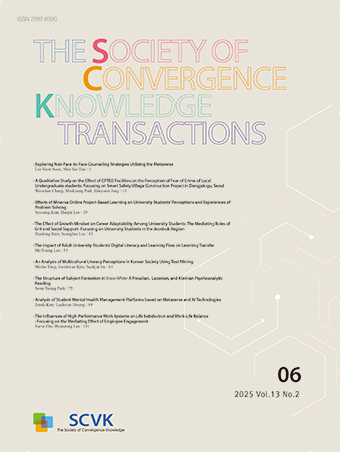Research Article
Abstract
References
Information
상수도관로에서 발생하는 누수를 효과적으로 제어하기 위해서는 관로의 상태를 정확하게 파악한 후 상황에 맞는 관리목표를 설정해야 한다. 본 연구에서는 지자체 여건을 고려하여 관로유형을 분류한 후, 국내외 평가지표를 활용하여 각 유형별 관로상태를 평가하였다. 지자체별 관로유형을 분류하기 위하여 급수인구밀도(배수관과 급수관 길이당 급수인구)와 상관성이 가장 높은 계측요금수량을 분류기준으로 설정하였다. 관로를 3단계 유형으로 구분하기 위한 계측요금수량 기준은 10 ML/km/year, 30 ML/km/year로 설정하였으며, 전국 161개 지자체 가운데 Type-I은 33개, Type-II는 54개, Type-III는 74개 지차체로 분류되었다. 조사대상지역(161개 지자체)의 상수도관로를 유형별로 나누어 평가하였으며, 대도시 및 계획도시를 나타내는 Type-I의 경우 평균 ILI와 유수율은 각각 4.0%와 88.9 %로 Type-II, III와 비교하여 관로의 상태가 우수함을 확인할 수 있었다. ILI가 가장 높게 나온 유형은 Type-II로서(10.4), Type-III 지역 수준의 관로개선사업 지원을 통한 대책 마련이 시급한 것으로 판단된다.
In order to effectively control the leakage occurring in the water supply pipeline, it is necessary to accurately grasp the pipeline performance and set a management goal appropriate to the situation. In this study, the types of pipelines were classified in consideration of local government financial status, and the pipeline performance of each type were evaluated using domestic and overseas performance indicators. As an indicator for classifying pipeline types, billed metered consumption that was most correlated with the population density (water population per length of distribution and service pip) was selected as the types of pipeline classification criterion. The billed metered consumption standards for dividing pipelines into three phases were set at 10 ML/km/year and 30 ML/km/year. The 161 local governments in Korea were classified as Type-I (33 local governments), Type-II (54 local governments), and Type-III (74 local governments). The water pipelines in the surveyed area (161 local governments) were divided by type and evaluated by ILI and revenue water rate indicators. The average ILI and revenue water rate of Type-I, which represent large cities and planned cities, are 4.0% and 88.9%, respectively, which shows that the pipline performance of Type-I is better than Type-II and III. The ILI value of Type-II is the highest (10.4), and it is urgent to prepare countermeasures by supporting pipeline improvement projects that are the same as Type-III.
- A. Lambert, “International report on water losses management and techniques”, Water Science and Technology:Water Supply, Vol. 2, No. 4, pp. 1-20, 2002.10.2166/ws.2002.0115
- B. Charalambous, and S. Hamilton, “Water Balance–From the Desk Top to the Field”, Proceeding of IWA Water Loss Europe, 2012.
- 이현동, 공명식, 강성원, 곽필재, 박은주, 박재현, 이준형, “물손실 저감을 위한 국외 상수도관망 평가지준 조사”, 대한환경공학회 국내학술대회, pp. 480-481, 2013.
- A. Lambert, T.G. Brown, M. Takizawa, and D. Weimer, “A Review of Performance Indicators for Real Losses from Water Supply Systems”, AQUA ISSN0003-7214, pp. 1-15, 1999.
- 환경부, “2017 상수도통계”, 2019.
- Marco Fantozzi, Alain Lalonde, Allan Lambert, Tim Waldron, “Some international experiences in promoting the recent advances in practical leakage management”, Water Practice & Technology, Vol. 1, No. 2, pp. 1-9, 2006.10.2166/wpt.2006.026
- Publisher :The Society of Convergence Knowledge
- Publisher(Ko) :융복합지식학회
- Journal Title :The Society of Convergence Knowledge Transactions
- Journal Title(Ko) :융복합지식학회논문지
- Volume : 7
- No :4
- Pages :61-68
- DOI :https://doi.org/10.22716/sckt.2019.7.4.051




 The Society of Convergence Knowledge Transactions
The Society of Convergence Knowledge Transactions







